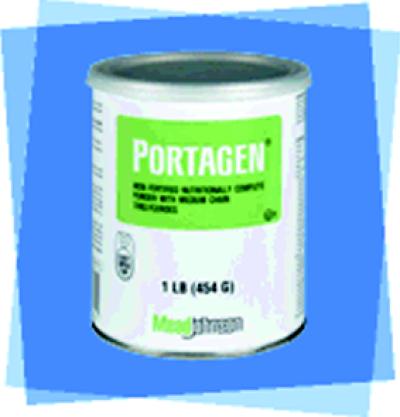Background and epidemiology: The US Centers for Disease Control and Prevention recently reported an outbreak of Enterobacter sakazakii infection associated with the use of powdered infant formula in a neonatal intensive care unit (NICU).1 The report not only offers a reminder about this rare but often fatal disease, but also about the importance of proper handling and use of infant formula products in the health care setting.
The index case in the outbreak was a male infant born at 33.5 weeks who was admitted to the NICU because of prematurely low birth weight and respiratory distress. The infant developed fever, tachycardia, decreased vascular perfusions and suspected seizure activity at 11 days. Culture of cerebrospinal fluid (CSF) grew E. sakazakii. Intravenous antibiotics for meningitis were administered, but the infant died 9 days later.
Enhanced case surveillance of 49 infants in the NICU identified 9 additional cases — 2 cases of “suspected infection” (E. sakazakii-positive culture from a nonsterile site, i.e., tracheal aspirate, with documented clinical deterioration) and 7 “colonized cases” (E. sakazakii-positive culture from a nonsterile site, i.e., stool or urine, without documented deterioration).
Analysis of possible risk factors such as gestational age, birth weight, mechanical ventilation, humidified incubation, oral medications, feeding type and feeding method found that only the use of a specific powdered infant formula product developed for infants with malabsorption problems (Portagen, Mead Johnson Nutritionals, Evansville, Ind.) was significantly associated with the cases. Cultures taken from opened and unopened cases from a single batch of Portagen grew E. sakazakii. Cultures from other sources such as the water and surface environments were negative. Mead Johnson Nutritionals voluntarily recalled batch BMC17 of Portagen on Mar. 29, 2002, and distributed a letter to health professionals about the risk posed by powdered infant formulas.1
E. sakazakii is a motile, gram- negative rod. Its natural habitat and reservoir is unknown. Most reported cases are nosocomial and involve infants. A recent review of the literature identified only 4 reported cases in adults.2 Many of the cases involving neonates implicate dry infant formula as the source of outbreaks and sporadic cases of E. sakazakii infection and colonization.
Clinical management: Most infected neonates present with meningitis or bacteremia, and seizure activity is present in about one-third of cases. The case- fatality rate is about 50%. A head CT scan should be considered early in the management of patients with E. sakazakii in the blood or CSF. In nearly all cases it reveals abnormalities due to the massive invasion by the gram-negative bacilli. These include cystic changes, abscesses, fluid collection, dilated ventricles and infarctions caused by the invasion. A follow-up CT scan should be done, even if the first does not reveal cystic changes, because new findings such as hydrocephalus may appear.2
Traditionally, E. sakazakii meningitis has been treated with ampicillin and gentamicin or ampicillin and chloramphenicol. However, a review of the literature suggests that increasing antibiotic resistance should lead to consideration of carbapenems or the newer cephalosporins in combination with a second agent such as an aminoglycoside.2 Trimethoprim–sulfamethoxazole may also be useful.2
Prevention: A study of the thermal resistance of E. sakazakii in reconstituted dried infant formula indicated that the organism is highly thermotolerant.3 Hence, process control during manufacture and the use of aseptic procedures during the preparation, use and storage of dried infant formula are of the utmost importance. Powdered infant formula is not sterile and can provide a good medium for bacterial growth. Prolonged periods of storage or administration at room temperature might increase the amount of bacteria present. The US Food and Drug Administration (FDA) has proposed interim recommendations concerning the preparation of powdered infant formula in the NICU and advises that formula products be selected on the basis of nutritional need; alternatives to powdered forms should be chosen when possible.
Trained personnel should prepare powdered formula under aseptic techniques and conditions in a designated preparation area following the manufacturer's instructions. The product should be refrigerated immediately and discarded if not used within 24 hours. The administration hang time for continuous enteral feeds should not exceed 4 hours. The FDA also recommends that written guidelines be available in the event of a product recall. These should include the notification of health care providers, a system for reporting and following up on specific formula products used, and retention of recall records.1
Erica Weir CMAJ
Figure.

References
- 1.Centers for Disease Control and Prevention. Enterobacter sakazakii infections associated with the use of powdered infant formula — Tennessee, 2001. MMWR Morb Mortal Wkly Rep 2002; 51 (14): 298-300. [PubMed]
- 2.Lai KK. Enterobacter sakazakii infections among neonates, infants, children and adults: case reports and a review of the literature. Medicine (Baltimore) 2001;80:113-22. [DOI] [PubMed]
- 3.Nazarowec-White M, Farber JM. Thermal resistance of Enterobacter sakazakii in reconstituted dried-infant formula. Lett Appl Microbiol 1997; 24: 9-13. [DOI] [PubMed]


